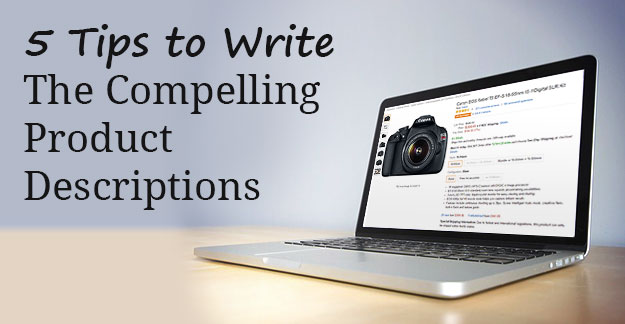
When stepping out to buy something, there are some items on the buyer’s list that they know exactly what they want and there are some that they would like to find out more about. Then there are other purchases which are a lot more involved.
How to write a product description will depend on what kind of product you are selling. For an in-and-out buy, one which requires no contemplation, you don’t want to get in the way of your visitor and their purchase, you don’t want your description to be too verbose.
However, if your product is one where the visitor will check different sites and/or brands, there is lots of room to get creative and in fact, get creative you must. Here are a few pointers on how to go about it.
How to Write a Product Description
Describing your product vs. selling your product
Writing product descriptions can be as easy as copy-pasting the manufacturer’s description or as creative as giving your customer a reason to buy. Remember you want to sell your product, not just describe it and let the visitor move on.
Of course, the product description and specifications of your product are important and necessary too. But, a little enticing way to go about it will go miles in actually converting a visitor into a buyer.
You want to establish the features while reinforcing the benefits. You want to tell the visitor how their life is going to be easier while they enjoy it too!
Selling product vs. selling an experience
Once you are sold on the idea that you are selling and not merely describing, you want to take it a step further. You want to make your product a compelling buy. Get the prospective buyer to engage all his senses while reading about the product. Make it experiential rather than factual.
Where relevant, mention how pleasing it is to the eye and why; the kind of aroma or taste it evokes; how it feels to the skin and so on. These could be included as a part of establishing the features. Sensory adjectives like smooth, crunchy, suave work much better than generic ones like beautiful, exceptional or pleasing. Use these as a benefit.
Selling an experience with specificity and without a flake
Be careful before you use words like “top most”, “100%”, “best”. Not only are these superfluous, they are untrue. And worst of it all, visitors see through them if they notice them at all.
Instead, give them reality – the good bits of it, at least. Give them the facts behind the uniqueness that your product is. Give them specific numbers of how much time will they save or much more effective they will be because of your product.
Selling with story-telling
As human beings, we love listening to a story. Tell your visitors one about your product. Maybe an interesting anecdote that went into its making or maybe the thought behind the concept or its conceptualisation itself. Even better would be to include the visitor in the story, have him or someone he knows have a problem which your product solves.
Obviously, you cannot be too obvious about your product, else your story will be predictable.(no one likes to watch a movie if they know how it ends.)
Selling with humor
Either entertain or educate. While there is no choice but to educate the visitor about your product, there is a chance to get them to smile while doing it. Of course, your product has to warrant humor and your target audience should be appreciative of it. But when it can be done, it should be.
Selling in bullet points
And you have to do all of this in as few words as is possible. Sure, there are successful paragraphs that manage to make an actual sale; they are few and far between. The truth is that most visitors have short attention spans, very short. And it is getting shorter by the day. So be creative, but keep it short. Tell a story, but say it quickly.
Product descriptions are your chance at expanding on your catchy headline or witty tagline. Most times, the visitor is looking for all the information your have in your product description. It is up to you now to give it to them in an engaging manner or lay it out like a dry, dull description.


